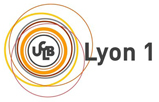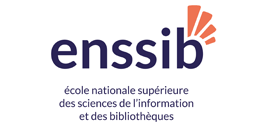Environnements techno-numériques pour les interactions et la prise de décision
By Dietmar Rabich, CC BY-SA 4.0
Environnements techno-numériques pour les interactions et la prise de décision
Séminaire transversal du laboratoire ICAR – coorganisé par l’IXXI – ouvert à toutes et tous
Date lundi 16 décembre 2024, de 13h30 à 15h
Lieu ENS de Lyon, site Descartes, salle D2.104
Visio https://cnrs.zoom.us/j/99449794957?pwd=94BKYbTxSc00sV9G6sdTdaRyhpnurS.1
Sébasatien Lerique (ENS de Lyon – IXXI)
Humane interactions and care: for a re-framing of technology and its design.
Our understanding of interactions, be they linguistic or technological, are quickly evolving. Both language and technology are now seen as an emergence of complex dynamics evolving over time. Language, instead of static grammatical rules, is understood as multi-scale interaction dynamics in a community. On the other side, technology now mediates a large part of such interactions, and its role in mutual understanding and care becomes a central question. Indeed, current technology often reduces or restricts humane interactions: laptops, phones, and most devices are designed for an individual, enabling interactions exclusively over the digital network. In a living-room analogy, all friends or collaborators have chairs in the same space, yet their shared table is the digital network instead of a common physical object. In this context, numerous issues have easily emerged. Addictive social media, for instance, has grown using technology designed for individuals first. While video-projectors, interactive digital boards, or even AI (e.g. GPT, LLaMa, etc.) are claimed as an answer for general interactions, a step back with broader framing, asking about technology as a tool, shows two overall challenges.
First, technology has lost diversity in its design and aims. Production, along with detailed design, have become world-wide centralised with a single goal: the next generation of technology should just be smaller with higher performance. Yet if our use of technology can change, its high performance might not be necessary, becoming a useless race. Re-opening the diversity of hardware architectures would in turn re-open diverse uses of the (software) tools produced. Similarly to when one can thoroughly design their living room, not just painting its walls, humane technical diversity could be supported given a gradually decentralised, locally adapted development. Second, instead of competing against live linguistic interactions, technology could become a community tool that helps mutual understanding, taking our existing complex interactions as they are. Together, such a re-framing may open different paths for our use of technology, re-developing humane technical architecture and production, and re-opening an old question about technology’s societal role.
Arnaud Grignard (IRD – IXXI)
Simulations participatives tangibles pour étudier les dynamiques spatio-temporelles dans la prise de décision urbaine et environnementale
The talk will illustrate the application of agent-based modelling for Urban Application such as mobility, energy consumption and social phenomena, with implications for both urban planning and environmental science. Key focus will be directed towards showcasing the utilization of the open source framework Gama Platform and CityScope project.
Arnaud Grignard, a researcher affiliated with the IRD (French National Research Institute for Sustainable Development) and the MIT Media Lab in the CityScience group, will present insights gleaned from his collaborative work. One of the common threads will be to show how his methodologies and tools can be used for participatory science by building physical representations of cities and projecting data on it. With such an approach, not only it becomes possible to visualize behavior on a large scale, such as movements of people and vehicles but also to alter them to analyze the effects. Particular emphasis will be placed on real-world applications, such as projects exploring the correlation between air quality and daily commuting patterns within urban environments.










